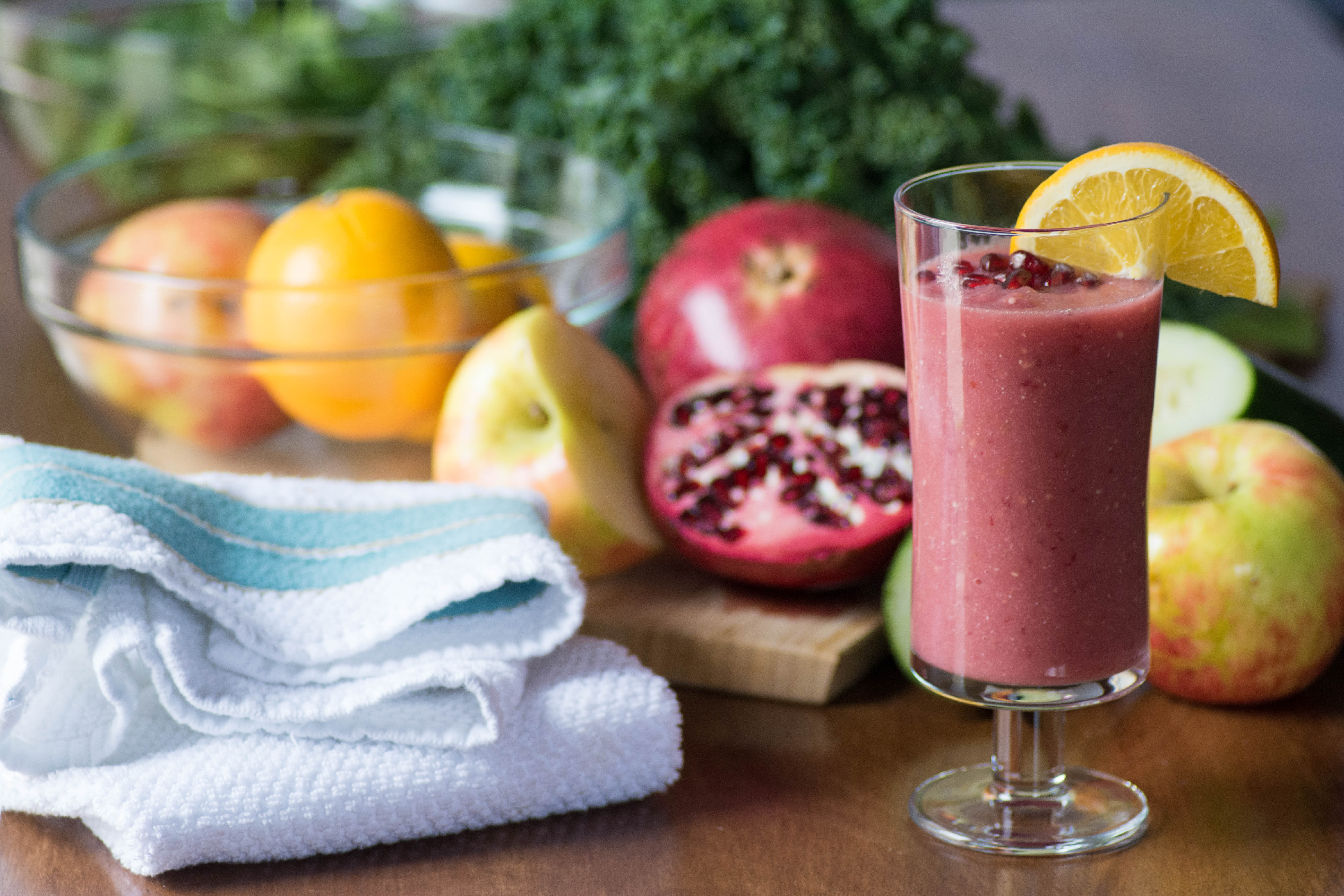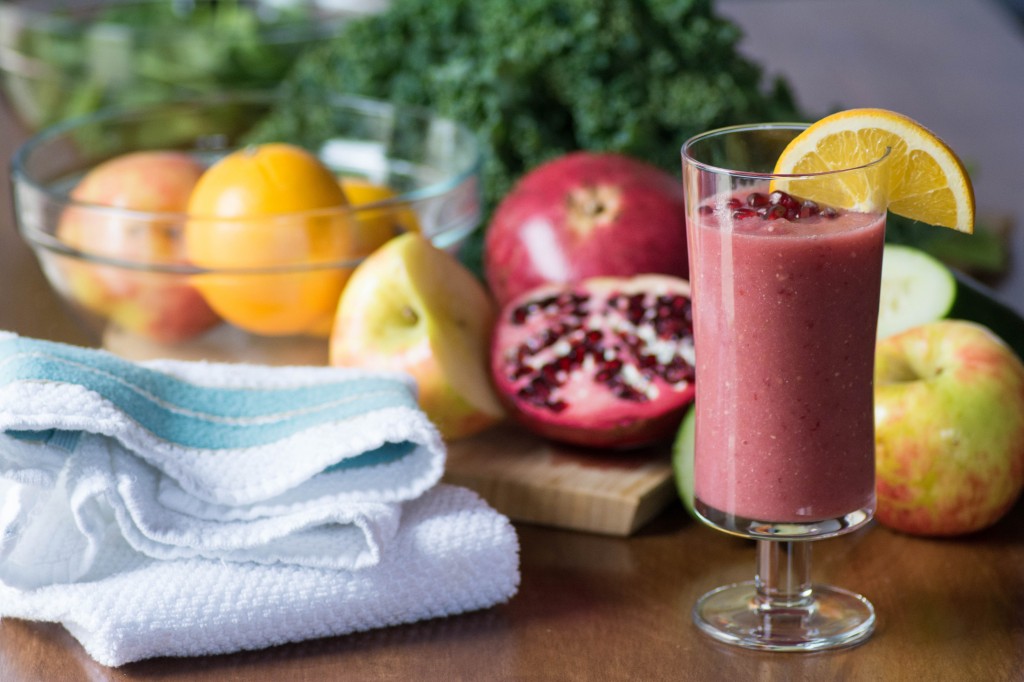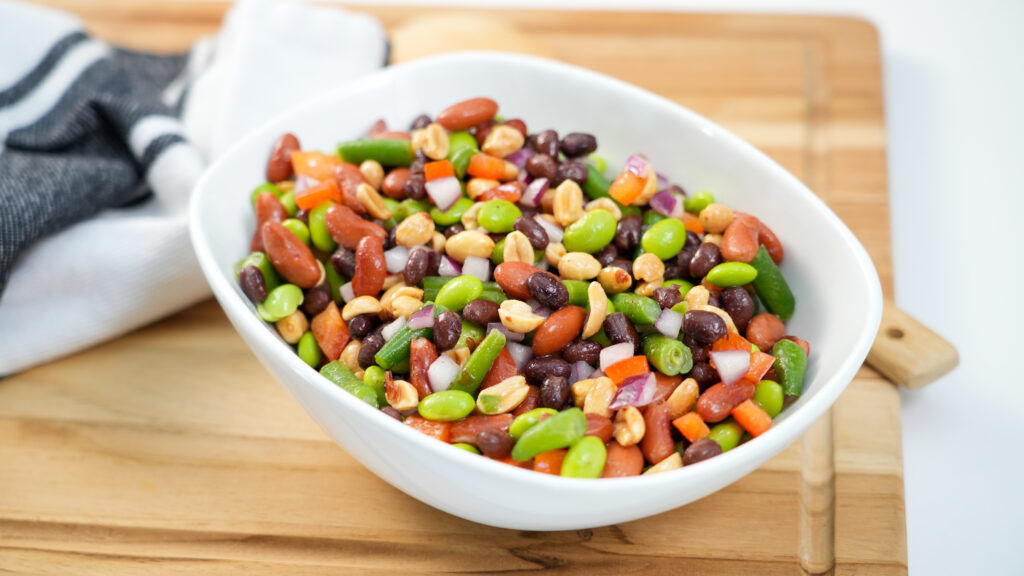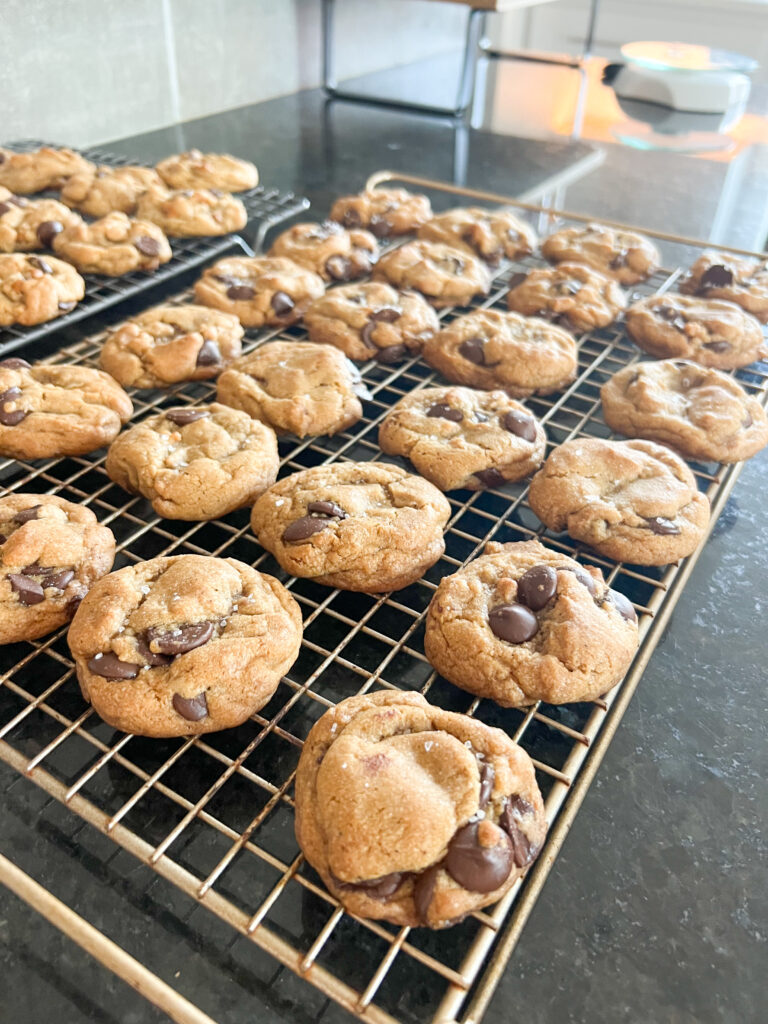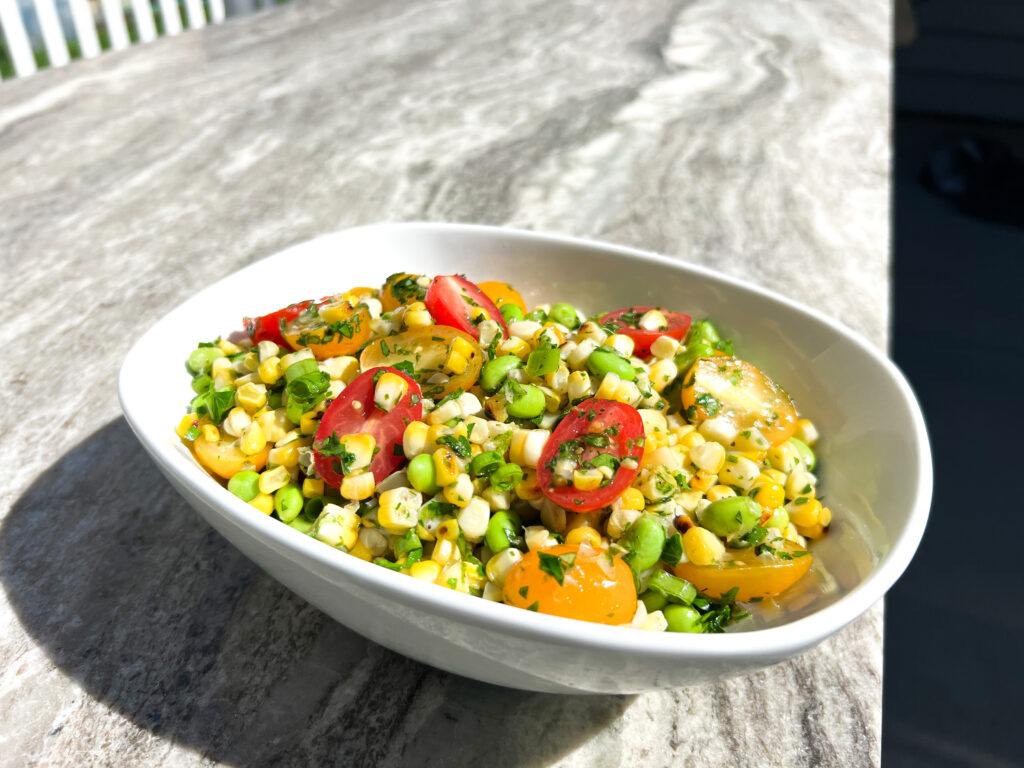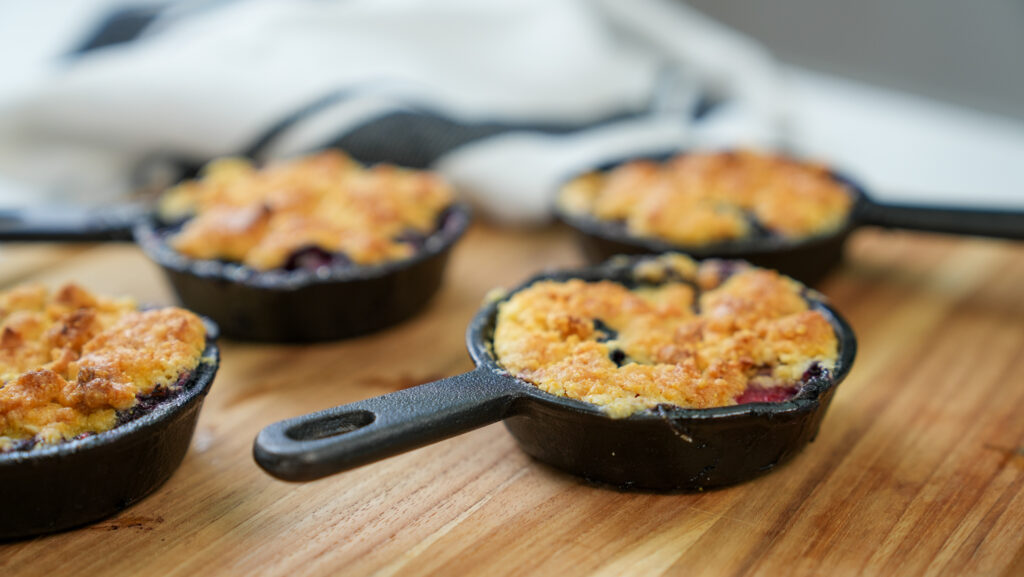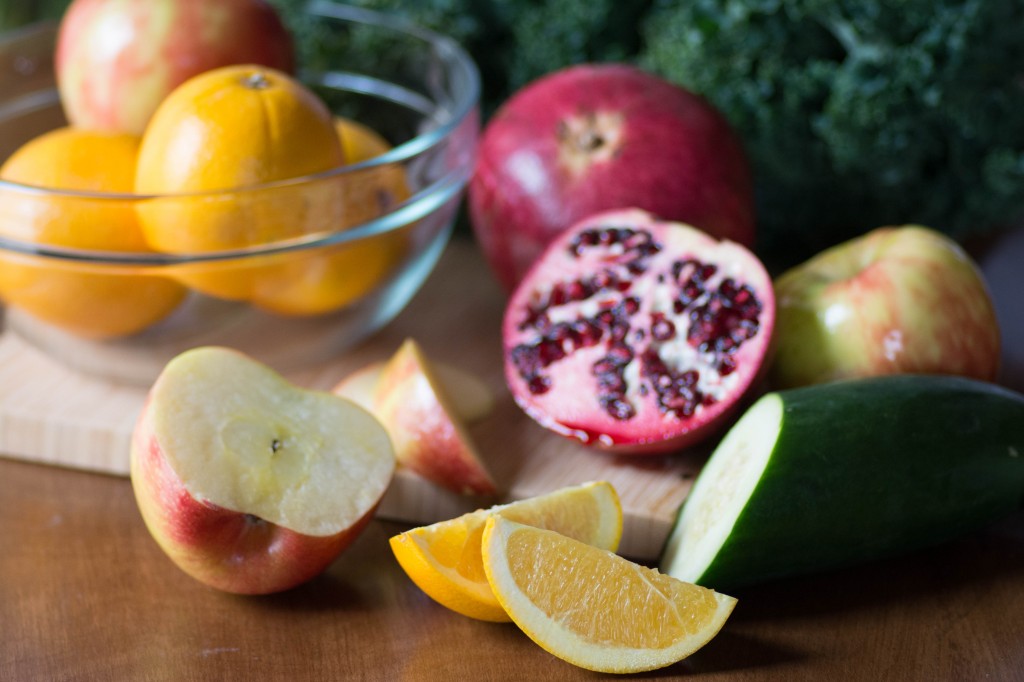
Last week the community manager at Williams-Sonoma reached out to me with questions about juicing. This was perfect timing, because I’ve been wanting to share this recipe I’ve been obsessed with lately and talk more about how you can make juicing apart of your lifestyle.
Over the last two years, I’ve definitely seen an increase of people wanting to learn more about juicing and try it for themselves. Why is this? Well, we now have many juicers on the market (thank you innovation & technology) that make it easier to enjoy fresh juices at home. I’ve also noticed documentaries and influencers encouraging more plant based diets, which is another reason I think we’ve seen a new surge in juicing. If you’re struggling with getting the recommended 5 servings of fruits and vegetables/day, juicing might be a great way to help you solve that problem!
Here is my Q & A:
1. As a Registered Dietitian, what are your thoughts on juicing spinach and kale?
Funny you should ask me about this because I eat spinach and kale all the time, but only on salads. For the love of all that is pure and green, I cannot bring myself to put them in my juice. I know that probably sounds crazy coming from a dietitian, but I just can’t do it. However, I have many colleagues, clients, and even my own mother and 13 year old nephew that love kale and spinach in their juices and smoothies. These power-house greens contain many great nutrients such as potassium, vitamin A, and calcium! If you are able to tolerate the flavor in your drinks, then go for it!
Is this a great way for someone to get the right amount of protein from juice?
Spinach has 1 gram of protein per cup and kale has 3 grams of protein per cup. So, if you had to choose between the two greens based on protein content, kale would be the better choice. Kale also contains more vitamin A and potassium than spinach. However, I would not rely on spinach and kale alone as protein sources. You would have to consume quite a bit in order to get a decent amount of protein.
Any other suggestions?
More protein, peas. If you’re looking for another vegetable protein source, peas actually have 8 grams of protein and 7 grams of fiber per cup. Peas are also high in vitamin C, iron, and contain even more potassium than kale per serving.
2. There are many different types/brands of juicers available. What is your preference of a slow juicer and a masticating juicer and why?
Great question, but I think I need to break this down a bit for those starting out. There are many types of juicers on the market, but these would be the main categories of juicers available: 1. Slow masticating/cold press juicers 2. Whole food juicers and 3. High speed centrifugal juicers.
Masticating = means to chew
Slow Juicer = means the machine is using less heat to extract the juice (cold press)
Whole Food Juicer = means a blender on steroids (super hero power)
High Speed Centrifugal juicers = means it uses more speed, creating more heat to extract the juice
Now back to the question. I honestly don’t own a slow masticating juicer appliance. Why? I’ve never been a fan of doing a lot of prep (cutting and chopping) in order for my fruits and vegetables to fit in the juicer. I also hate all the waste and pulp the slow & high speed juicers leave behind. I do know there are some where you can include whole fruits and veggies without tons of prep work, like the Kuvings whole food juicer that looks pretty sweet. What I do have is the Kitchen Aid Stand Mixer Slow Juicer Attachment. Yes, I still have to do some prep and it does leave some waste, but I never make very large quantities. However, I don’t use it that often because I do have to plan ahead. I’m a busy girl, so I have to allow time for prep and time for clean up.
What’s one thing your juicer does not do that you wish it could?
Well, if I’m honest, I’m a bit power-hungry and impatient. I wish I had a whole food juicer like a Vitamix! (Dear Santa, are you listening???) My current blender does not produce the same magic I’ve seen a Vitamix produce.
Why would I love a whole food juicer? I love the idea of whole food juicing (putting it all in) because you’re not extracting the pulp and you don’t miss out on the fiber!
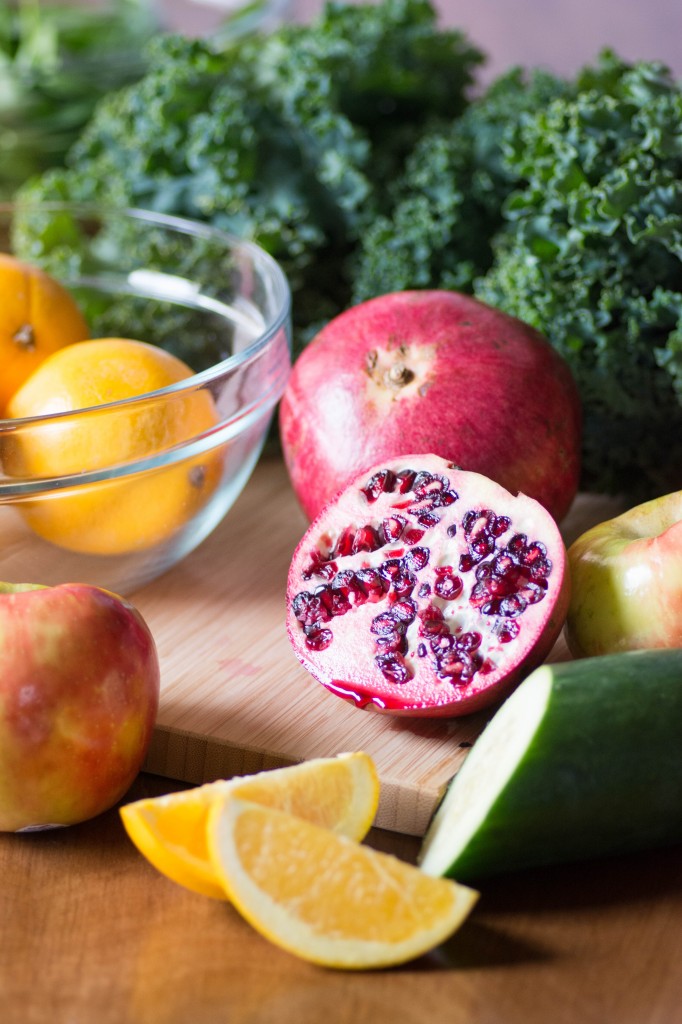
3. For someone who is just starting their juicing journey, what are some basic juicing tips you can give them to help get started?
When my clients or friends ask me about juicing, I always ask them a series of questions…
- Why do you want to juice?
- What are you goals with juicing? Increased nutrient intake? Weight loss?
- How much time do you have to devote to preparation and clean up?
- What is your budget?
Based on those answers, I can them direct them to the best types of juicers that would fit their needs. If you’re just starting out, you might want to think about using a whole food juicer like a Vitamix or the Kitchen Aid attachment. Why? Chances are you might already own a Kitchen Aid mixer, and the attachment is a great way to try juicing without purchasing a separate appliance. Trust me, I’ve seen many people jump on the juicing wagon and invest in one that they only use once or twice and then it finds a nice hiding spot in the basement next to that ab machine that was going to give them a six pack.
If you really want to reap the benefits of juicing but are still hesitant, then I would opt for the whole food juicer like a vitamix. Juicing doesn’t just have to just involve extracting the juice. You can still enjoy blended whole fruits and vegetables and reap the health benefits. And in my opinion, I think whole food juicers like a Vitamix are easier to clean and maintain. Plus, that type of small appliance is so versatile and might provide the best bang for your buck.
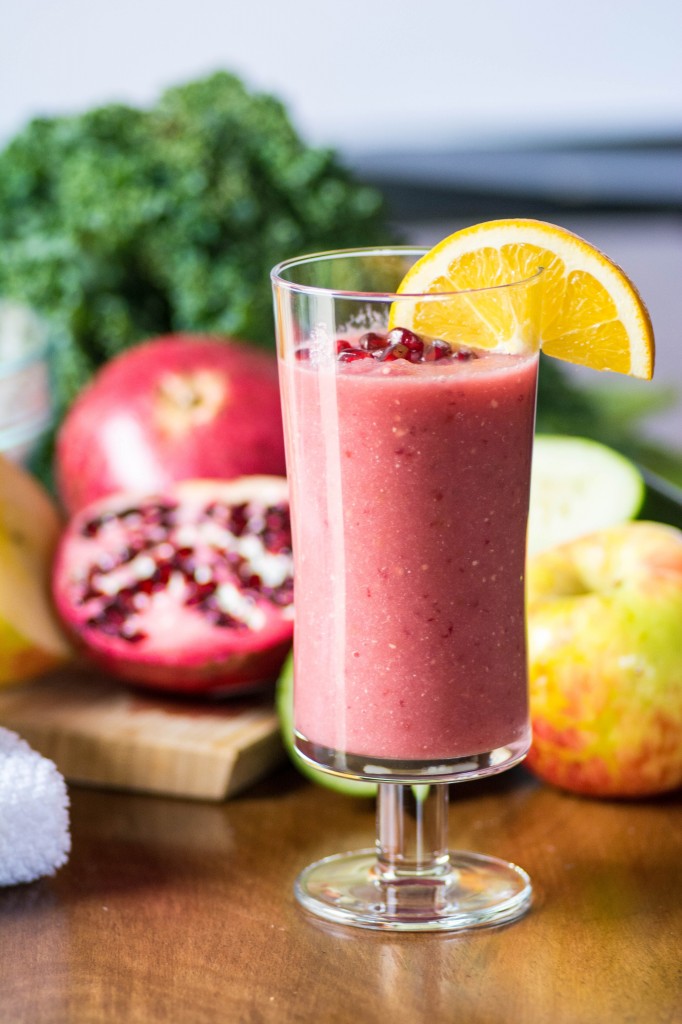
Thanks to Williams-Sonoma for the great questions! Be sure to check out the full selection of juicers that are available. And now, here’s a recipe I’ve been a little obsessed with lately. I simply blend together an apple, orange, and 1/2 cup of pomegranate seeds. Yummmmm!
